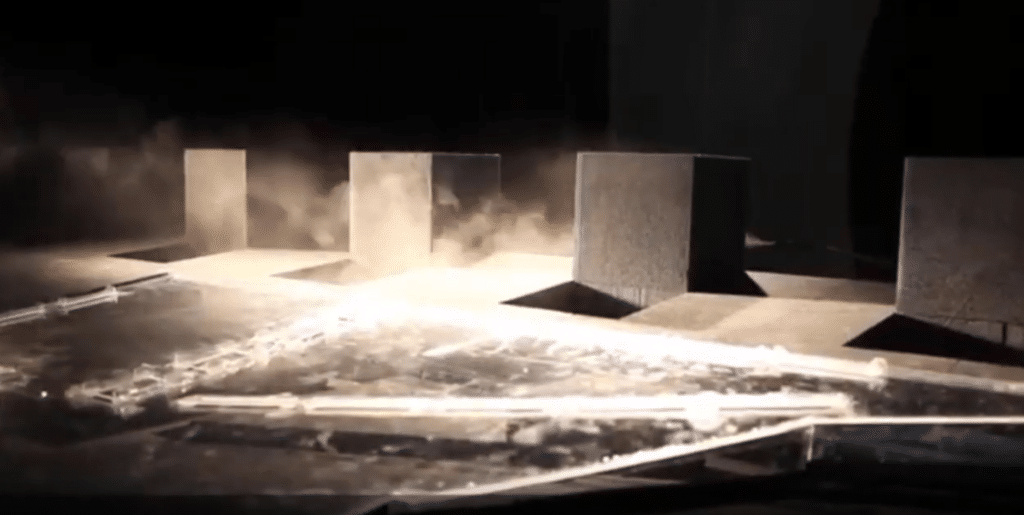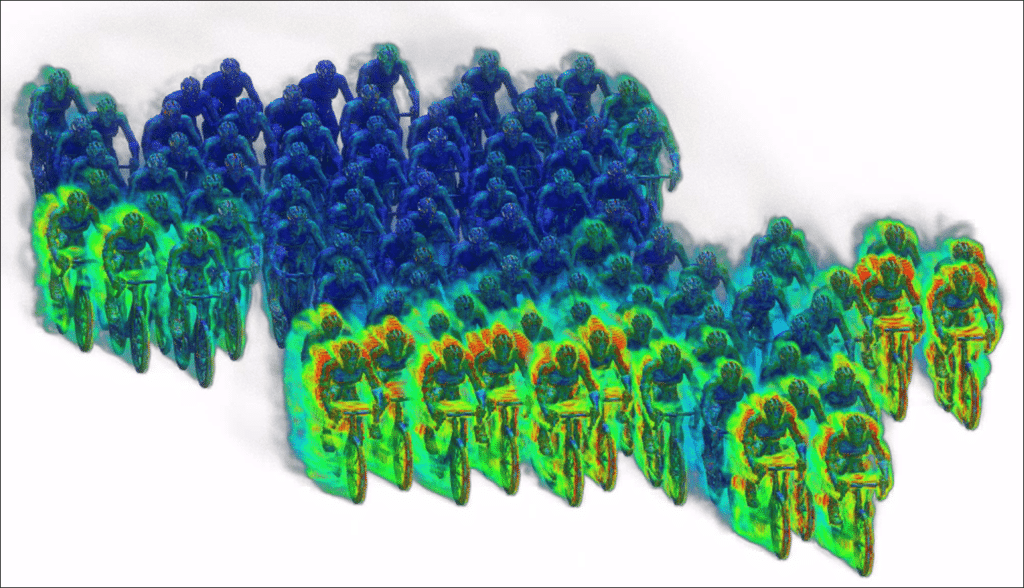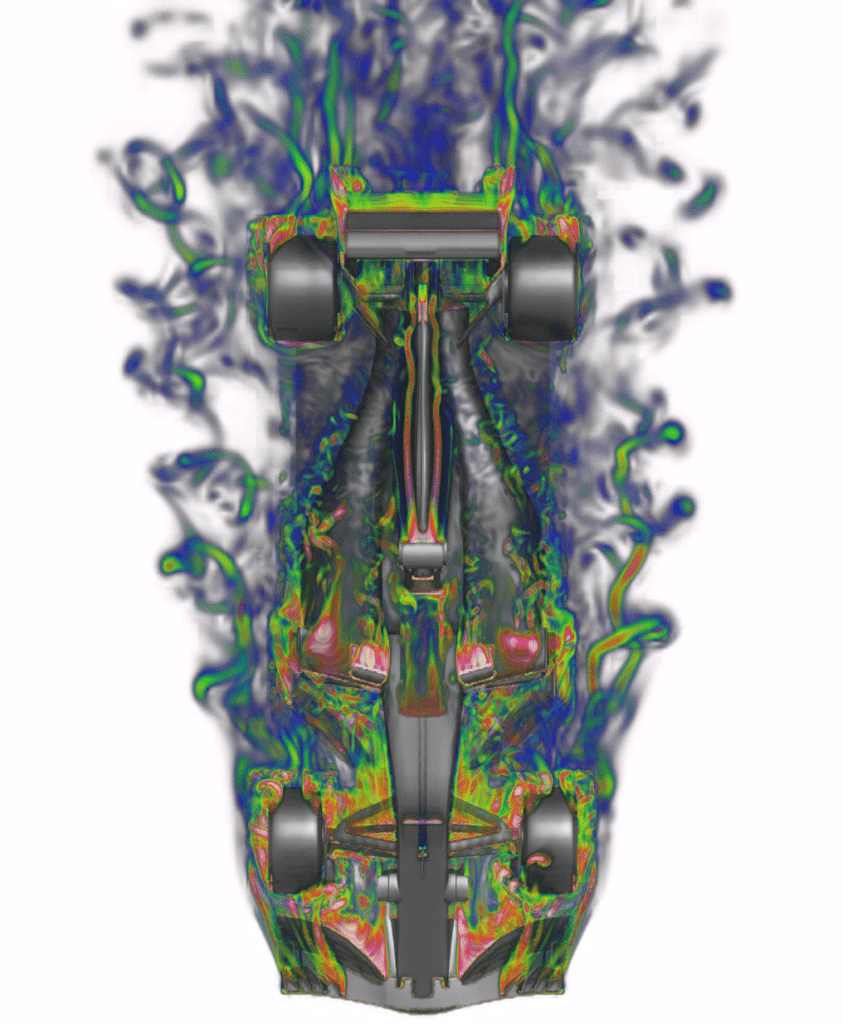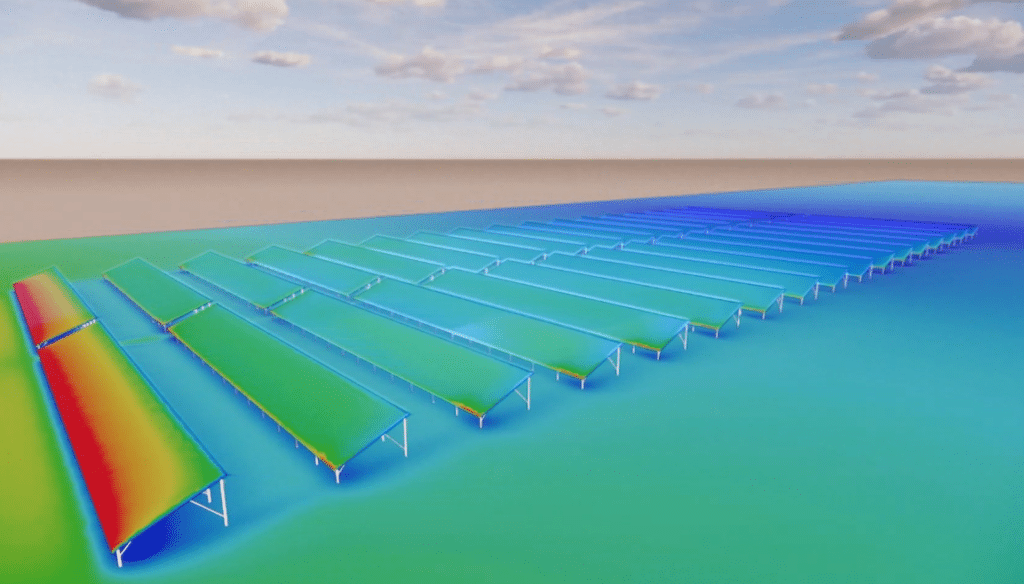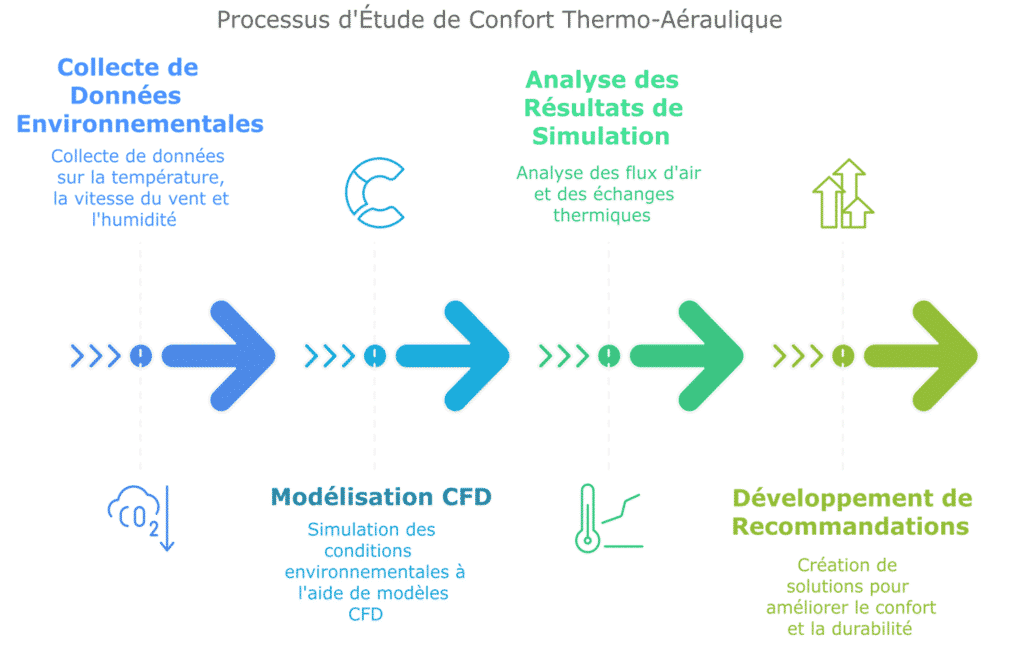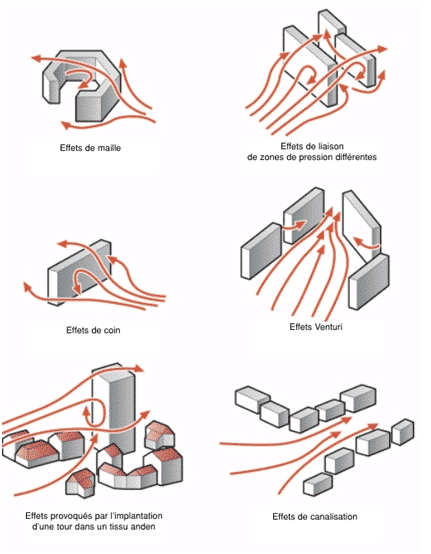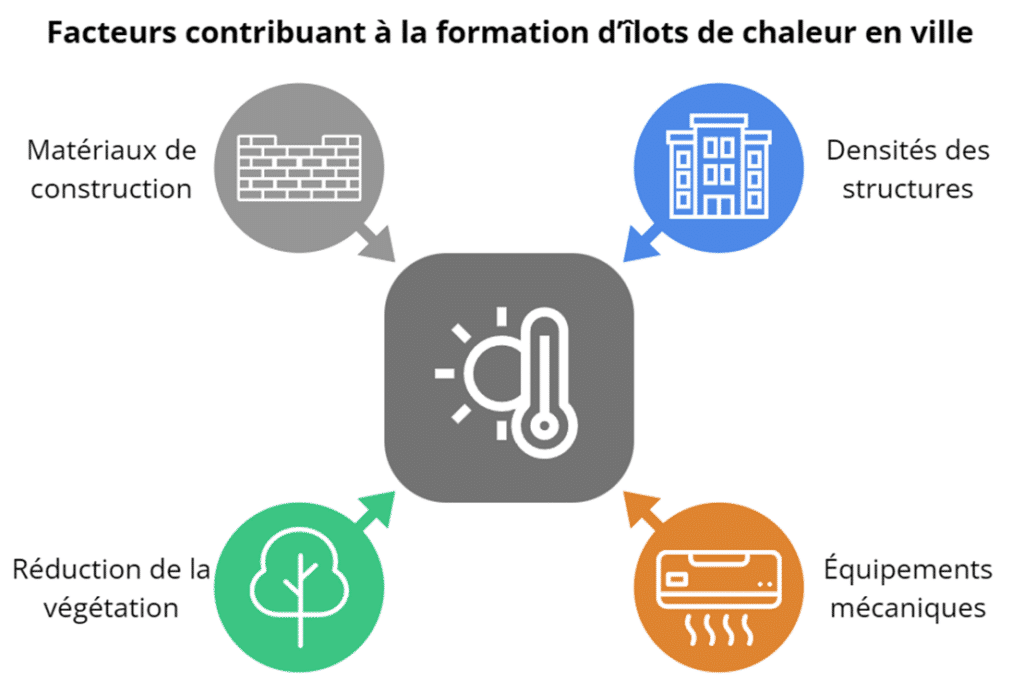Study of outdoor thermo-aerodynamic comfort
Accueil » Air & Wind » Study of outdoor thermo-aerodynamic comfort
Expertise to improve pedestrian comfort
In a world of ever-growing urbanization, it’s crucial to ensure a comfortable and sustainable outdoor environment. At EOLIOS, our expertise in the study of air and thermal flows, also known as CFD (Computational Fluid Dynamics), enables us to meet this challenge with precision and innovation.
We specialize in the study of pedestrian comfort in cities, neighborhoods and outdoor spaces.
- Pedestrian comfort check
- Study of urban heat island effects
- Calculating pressure coefficients
- Wind comfort study for outdoor spaces
- Sizing wind protection solutions
- Proposed master plan for urban development
- Urban project impact study
- Optimizing vegetation
- Study the propagation of pollutants
We work in collaboration with urban planners, architects and developers on impact studies, specific wind-related studies and the fight against urban heat island phenomena on the scale of cities, neighborhoods and outdoor spaces.
Continue navigation :
Our latest news :
Read more :
Our projects :
Our areas of expertise :
Technical File :
Pedestrian comfort studies by EOLIOS
What is a pedestrian comfort study at EOLIOS?
A pedestrian comfort study is an in-depth analysis designed to understand and improve thecomplex interaction between climatic factors and architectural infrastructures. At EOLIOS, we apply a methodical approach that incorporates the latest technological advances to recreate virtual environments that are faithful to reality.
Advanced Modeling Process - Analysis of climatic conditions
Analysis of climatic conditions plays a crucial role in our process, enabling us to understand and anticipate the complex interactions between natural elements and built infrastructures. By gathering precise data on local temperatures, we can assess thermal variations throughout the year, helping us to design energy-efficient solutions that are comfortable for occupants. Wind speeds are another key factor; by analyzing this data, we can identify areas prone to turbulence or strong winds, influencing decisions on building orientation, window layout or the design of outdoor spaces to ensure safety and comfort.
The process begins with the collection of environmental data, such as local temperatures, wind speeds and humidity levels. This data is then used to feed our CFD (Computational Fluid Dynamics) models, which simulate the real conditions faced by buildings and urban spaces. Thanks to these simulations, we can analyze how air flows interact with buildings, how heat dissipates through different surfaces, and howhumidity affects people’s perceivedcomfort. This virtual environment enables us to test various planning and architectural design scenarios, minimizing assumptions and maximizing accurate predictions of future performance.
CFD Data Analysis and Recommendations
After the simulation phase, our experts focus onanalyzing the results. We carefully study air flows, heat exchange, and the influence of urban facilities such as high-rise buildings, narrow streets and green spaces.
This analysis enables us to identify potential areas for improvement and optimize the layout and design of the infrastructure.
We develop specific recommendations aimed at enhancing the well-being of city dwellers by reducing overheating phenomena,improving air circulation, and promoting sustainable solutions focused onenergy efficiency. EOLIOS is committed to providing tailor-made solutions that take into account each project’s unique needs and expectations in terms of sustainable development.
Why pedestrian comfort studies are crucial
Improved comfort for residents and reduced environmental impact
In the context of today’s climatic challenges, thermo-aerodynamic comfort studies are becoming a necessity for cities aspiring to be both sustainable and resilient. Inhabitant comfort and reduced environmental impact are two primary objectives that can be achieved through a thorough understanding of climatic and architectural interactions.
Environmental and urban issues: A challenge met by our proposals for sustainable solutions
Urban centers face unique challenges such as heat islands, air pollution and energy management. A thermo-aerodynamic comfort study enables us to design infrastructures that not only integrate harmoniously with their surroundings, but also support sustainable practices. For example, by promoting better air circulation and reducing reliance on artificial heating and cooling systems, cities can reduce their carbon footprint. These studies also contribute to the efficient use of natural resources by taking account ofnatural sunlight and local winds to optimize building placement, thereby reducing energy consumption and enhancing urban sustainability.
Urban design planning: EOLIOS and anticipating climate conditions for resilient, sustainable cities
Anticipating extreme climatic conditions andintegrating thermo-aerodynamic planning from the earliest stages of an urban project offers considerable advantages. By minimizing the energy costs associated with air conditioning and heating solutions, cities can direct these economic resources towards other community improvements. What’s more, proactive planning helps create more comfortable living spaces, promoting citizens’ health and well-being. By implementing these studies when developing or renovating neighborhoods, communities improve not only their resilience in the face of climatic hazards, but also their attractiveness and overall quality of life. By adopting this approach, cities demonstrate their commitment to a sustainable, liveable future for all.
Rural landscaping - Typical wind impacts
Influence of wind on thermoaerulic comfort in rural areas
In rural areas, wind plays a crucial role in the thermoaerulic comfort of outdoor spaces, influencing the dispersion of pollutants, humidity levels and the temperature felt by inhabitants. Unlike urban environments, where built structures often modify air flows, rural areas generally allow the wind to circulate freely. This has both beneficial and constraining effects on people’s comfort. For example, a light breeze can improve thermal comfort by evaporating sweat in summer, but in winter it can also increase the feeling of cold by increasing the wind chill phenomenon.
CFD Solutions for Rural Landscape Optimization
Computational fluid dynamics (CFD) studies offer valuable insights into these complex interactions by modeling potential scenarios for optimizing rural landscape design. This includes, for example, thestrategic siting of hedges or natural barriers to reduce unwanted wind gusts without compromising the ventilation necessary for air quality.
The solutions proposed by EOLIOS for rural wind analysis take into account seasonal variations and topographical features. They guarantee tailor-made interventions that improve quality of life while respecting thenatural environment.
Managing urban air movements: Our solutions for greater comfort and safety
Understanding and Controlling Urban Wind Behavior
Wind in urban environments is complex and dynamic, influenced by the density of buildings and the configuration of streets. Unlike vast open spaces, the city offers wind a rugged terrain where it can manifest itself in surprising and often problematic ways. Understanding these interactions is essential to designing comfortable, sustainable urban environments.
In an urban environment, wind doesn’t simply follow a linear trajectory; it engages in a complex path between buildings. It collides with facades, veers around street corners, and accelerates in narrow corridors, creating tunnel effects and vortices that are difficult to predict without assistance. These air movements can lead to the formation of specific microclimates, where temperature,humidity and the perception of wind vary radically depending on thearchitecture present.
These phenomena render certain areas almost impassable, affecting pedestrian comfort and sometimes threatening thestructural integrity of buildings with excessive force applied to facades or glass surfaces. In this way, public squares can become uncomfortably draughty areas, and building entrances can become points of sudden, unexpected gusts.
Forecasting and Interventions : CFD for innovative solutions
At EOLIOS, our CFD studies enable us to accurately map wind patterns and identify at-risk areas in the urban fabric. Based on these analyses, we design tailor-made solutions, such as addingwind screens, modifying urban geometry or integrating vegetation to mitigate the undesirable effects of wind. These interventions not only improve thermal comfort, they also help reducewind erosion and optimize the urban microclimate. Our forecasts also help urban planners to plan the development of new infrastructures in such a way as to minimize disruption to air flows, thus contributing to a better quality of life for all residents.
Safety in the face of wind-related hazards - A subject at the heart of our concerns
Identifying the main wind-related risks
Wind comfort studies play a crucial role in anticipating safety risks in urban and rural environments. By examining the dynamics of air flows around infrastructures, these studies help to identify potentially dangerous areas, where excessive wind force could threaten the stability of cyclists, pedestrians, or in some cases even impact trucks. This identification is essential for predicting and preventing weather-related incidents, thus guaranteeing the safety of users and passers-by in areas likely to experience violent gusts or strong air currents.
Innovative preventive solutions
Based on the risks identified, wind comfort studies help to design and implement appropriate preventive solutions. These may include the installation of strategic windbreaks, the modification ofbuilding orientation, or the integration of vegetation structures to channel or reduce the impact of high winds. These measures prevent potential accidents and minimize business interruptions, while improving the well-being of local communities. Taking into account long-term climate forecasts, these interventions are designed to evolve with the infrastructure, ensuring lasting resilience to the challenges posed by wind.
What is an urban heat island?
Impact of Urban Heat Islands on Thermal Comfort
Urban heat islands represent a major challenge for the thermal comfort and environmental sustainability of modern cities. This phenomenon results in significantly higher temperatures in urban areas than in the surrounding countryside, significantly impacting residents’ quality of life. In dense urban environments, heat is absorbed and retained by buildings, roads and other infrastructure, exacerbating ambient heat, especially in summer. This concentration of heat leads to difficult conditions for residents, increasing air-conditioning requirements and energy consumption.
Factors contributing to heat islands
Several factors contribute to theappearance and intensity of urban heat islands. Building materials such as concrete and asphalt absorb heat during the day and release it slowly at night, preventing rapid heat dissipation.
The density of structures limits air circulation, hindering the natural cooling of surfaces. In addition,urbanization reduces the amount of vegetation, thus diminishingshade and evapotranspiration, which are natural cooling processes. Finally, mechanical equipment, including air conditioning and transport systems, also release heat into the environment, further exacerbating the problem.
Our solutions for mitigating urban heat islands
EOLIOS specializes inanalyzing and providing solutions to mitigate the effects of urban heat islands. Using sophisticated computational fluid dynamics (CFD) simulations, we assess the impact of each architectural element on urban temperature. Our solutions include improving building materials to reflect more sunlight, increasing green cover with green roofs and walls, and designing urban plans to encourage natural ventilation. By integrating these strategies into the urban planning process, EOLIOS helps create healthier, more comfortable urban environments.
EOLIOS: Your strategic partner for customized, sustainable CFD solutions in pedestrian comfort studies
EOLIOS ‘ expertise and commitment to CFD for outdoor thermal-air comfort make us more than just a service provider; we are a strategic partner in the design of resilient, sustainable and welcoming spaces. By combining our passion for technical innovation with our constant concern for sustainability, we work to transform cities into harmonious extensions of their natural environment. We understand that every urban project is unique, which is why our solutions are always tailor-made, adapting our recommendations to local conditions and community needs.
To discuss how EOLIOS can collaborate on your projects, to propose environments optimized for thermal comfort, and sustainably connected to thesurrounding ecosystem, don’t hesitate to contact us. Our experts are ready to listen to your needs, share their knowledge and work together to realize your ambitions.


